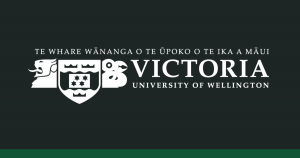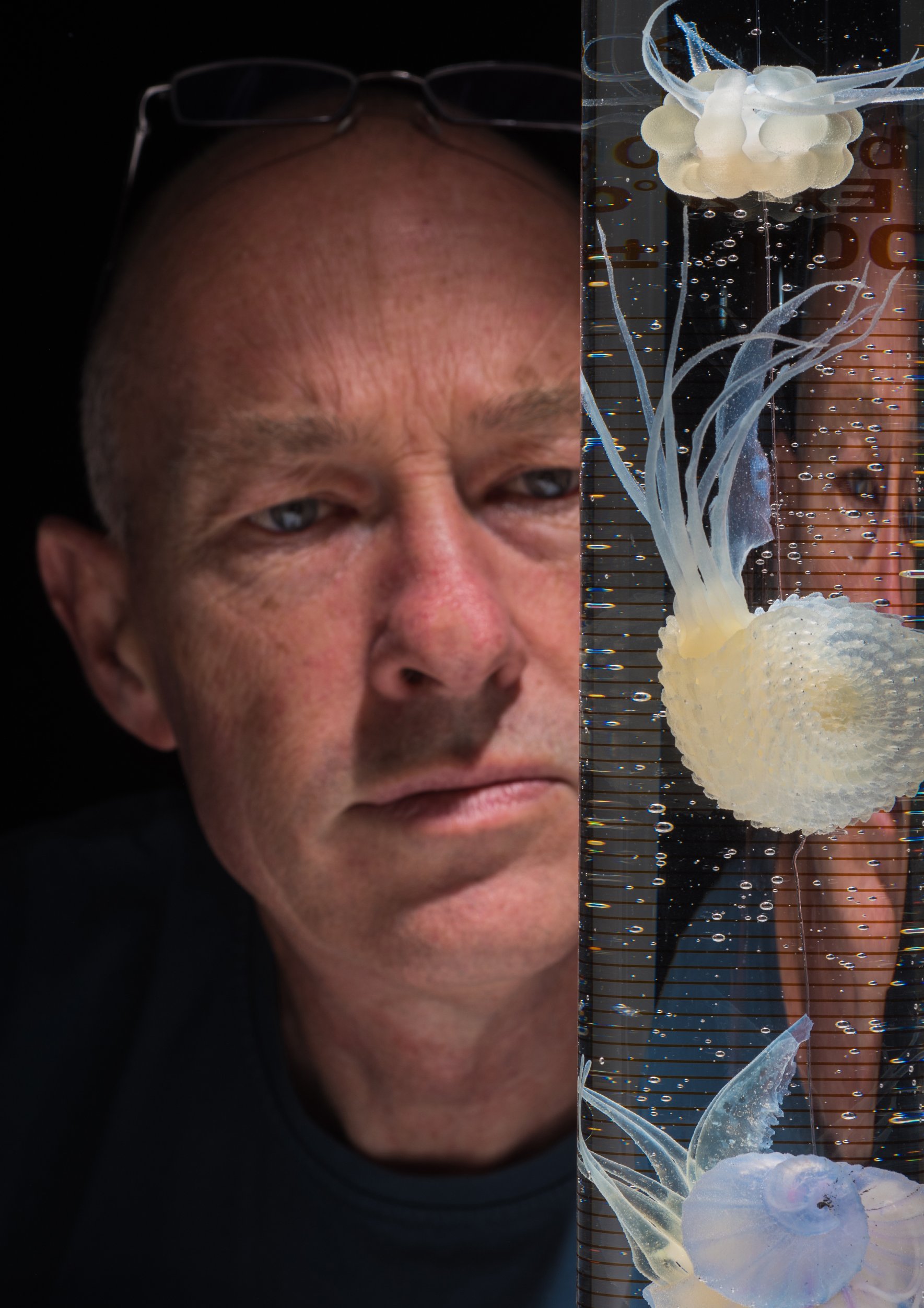With indisputable expertise in digital filmmaking, New Zealand is leading the way into some of the most evolved new techniques in 3D printing. One place, in particular, is pushing the boundaries of innovation, Victoria University of Wellington’s School of Design has a brilliant program led by industrial designer and architectural enthusiast Ross Stevens, one of the minds behind some of the cutting edge research using the latest 3D printers. If anyone knows where 3D printing is going, it’s definitely Stevens, who’s leaving quite a hard-to-follow trail researching voxel-based multi-material 3D and 4D printing, verbal computer interfaces for 3D and 4D modeling and bioengineering.
“One of the advantages of Victoria University is that it’s based in a very digital city with a big movie industry, so that gives us a cool culture of really high-end digital people that makes our work, what I like to call, High-Media Printing possible. When you think of a 3D print, you just define the exterior volume of it or the shape, but we are making subsurface prints, researching the voxel capacities with Stratasys, so our files are much more media dense, creating objects that have millions, if not billions, of individually defined droplets,” Stevens told 3DPrint.com during an interview.
At Victoria, the experienced senior lecturer of future studies and 3D printing has been working with Stratasys printers since 2004, and now, the J750 gives him colour, flexibility, and transparency in 14 micron droplets. Very few people are actually using this technology, so Stevens is really thrilled to understand what its commercial applications could be. He explained that “the key is to have the capability to be transparent and go subsurface”, which is something this machine can definitely do. Still, Stevens claims that not many people actually realize the potential it has, so there aren’t a lot of case studies yet.
“We see it as one of the ways printing will go structurally, because the polyjet is built on a different support system and can print almost any shape. Unlike the FDM printers where you need to worry about gravity, here it doesn’t even exist. Stratasys has made the most incredible machine in the world and very few people have really scratched the surface of its potential. At Victoria, we were adamant that if we were lucky enough to get it, we would use it to it`s full potential, and with 60 first-year students already starting to work on their additive manufacturing projects, we challenge them to start thinking in voxel capabilities,” continued Stevens.
Working along with a commercial partner, Weta Workshop, the university program is trying to lead the way for 3D printing. With over 100 projects and special effects for movies like Avatar, Blade Runner 2049, Thor Ragnarok, Mad Max: Fury Road and Ghost in the Shell, the groundbreaking film and exhibition company is aggressively looking into some of the edgiest technologies out there. That’s were Stevens and his Design Program come in, trying to push the company and making sure they are ahead of the game. Filmmaking has seriously turned to the CGI digital effects industry, making anything a director dreams about come to life on the screen. Yet, it seems that actors are trying to react to a creature that’s not really there and end up interacting with a big green screen. Through a lot of research, Stevens is combining digital objects with the physical world:
“With the J750 we can literally take everything that’s on the computer, right down to the pixel level and colours, and reproduce it into a physical object, breaking the boundaries between the computer world and the physical world, which is something we haven’t seen yet”.
 One of the star students that came out of Victoria University’s Design Program is Nicole Hone. About to start working at Weta Workshop, the 3D printing prodigy developed Hydrophytes while still at university, a project that shows the adaptive qualities of 4D printing -the creation of 3D printed objects that can move or change their shape or appearance through responding to external stimuli, such as temperature change or water absorption. Hone’s Hydrophytes can interact with their surroundings in the physical space, which makes them ideal for special effects developments that can push movie-making into an entirely new era, disrupting many of the CGI techniques currently available.
One of the star students that came out of Victoria University’s Design Program is Nicole Hone. About to start working at Weta Workshop, the 3D printing prodigy developed Hydrophytes while still at university, a project that shows the adaptive qualities of 4D printing -the creation of 3D printed objects that can move or change their shape or appearance through responding to external stimuli, such as temperature change or water absorption. Hone’s Hydrophytes can interact with their surroundings in the physical space, which makes them ideal for special effects developments that can push movie-making into an entirely new era, disrupting many of the CGI techniques currently available.
“Part of the problem with 3D printing is that you can print a beautiful Yoda statue which decorates your shelvess and looks great, but then, what do you do with it? After a while you start thinking about leaving it at the recycle box. At Victoria we are trying to look into 4D prints that have some kind of movement capabilities, so that there is an analog reaction to a 100% digital object. A lot of our work is about bringing the object that you created and printed to life, giving it character and an emotional quality that needs to be reactive, because part of the beauty is in the complexity of how it interacts with the surroundings.”
There’s a theological angle to Stevens work, what he likes to call the “mischievous” part of his research, challenging the boundaries of man-made objects (which are usually different for nature) by creating things that would normally be considered God-made, or nature-like. He explains that “this technology gets us closer to biology by helping us change the fundamental building blocks of life and moving towards a fully digitalised biology.” Growing up in bi-cultural New Zealand has shaped his views and given him insights into the importance of natural cycles for a 4-dimensional design process, and “because this technology is so new, none of the rules are written yet.”
Working in projects that can bring the computer world right into the physical realm is one of the objectives at Victoria, and Stevens is focusing strongly on the subsurface capabilities, which he considers is a remarkable tool to explore the growing power of computers, that have billions of bits of data, so that you can actually print them.
“If we end up with really smart computers and amazing things happening within them, but we can’t pull that out into the physical world, we’ve wasted a potential, while if we have equally sophisticated printers then we’ll be doing some amazing work.”
Stevens has been an industrial designer for 30 years, working with many of the world’s leading product designers, including Philippe Starck, and high-end audio brands like Bowers & Wilkins, Perreaux and Plinius. In 2009 he co-founded PureAudio, where they reuse materials harvested from the production process to create simple, innovative, and refined designs for the enjoyment of music. As the Programme Director of Industrial Design at Victoria, Stevens encourages students to boldly go where no one has gone before with courses like Design Led Futures and Future Under Negotiation, as well as with the Multi-property Additive-manufacturing Design Experiments (MADE). During the past decade he has developed relationships with industry and international research companies to enhance some of the most incredible technology as well as getting early access to the latest machines and software.
It sure is one fascinating world for Stevens. Especially now that he will be venturing into some of the more complex additive manufacturing research projects, like bioengineering, which also bring along quite a few ethical issues. He considers New Zealand to be a great place where all the philosophical, theological and even political questions related to 3D printing can be answered.
“This a country a long way away from everything, full of pioneers who like going places no one has ever gone before; so pioneering technology really suits us, since we have a particular freedom to work with this big themes,” he suggested.
If the country’s 3D printing community can solve some of the challenges behind this technology, the field could move even quicker than we thought, bringing the digital world much closer to our physical realm.
Subscribe to Our Email Newsletter
Stay up-to-date on all the latest news from the 3D printing industry and receive information and offers from third party vendors.
You May Also Like
Gorilla Sports GE’s First 3D Printed Titanium Cast
How do you help a gorilla with a broken arm? Sounds like the start of a bad joke a zookeeper might tell, but it’s an actual dilemma recently faced by...
Nylon 3D Printed Parts Made More Functional with Coatings & Colors
Parts 3D printed from polyamide (PA, Nylon) 12 using powder bed fusion (PBF) are a mainstay in the additive manufacturing (AM) industry. While post-finishing processes have improved the porosity of...
$25M to Back Sintavia’s Largest Expansion of Metal 3D Printing Capacity Since 2019
Sintavia, the digital manufacturing company specializing in mission-critical parts for strategic sectors, announced a $25 million investment to increase its production capacity, the largest expansion to its operations since 2019....
Velo3D Initiates Public Offering in a Bid to Strengthen Financial Foundations and Drive Future Growth
Velo3D (NYSE: VLD) has been among a number of publicly traded 3D printing firms that have attempted to weather the current macroeconomic climate. After posting a challenging financial report for 2023,...




































